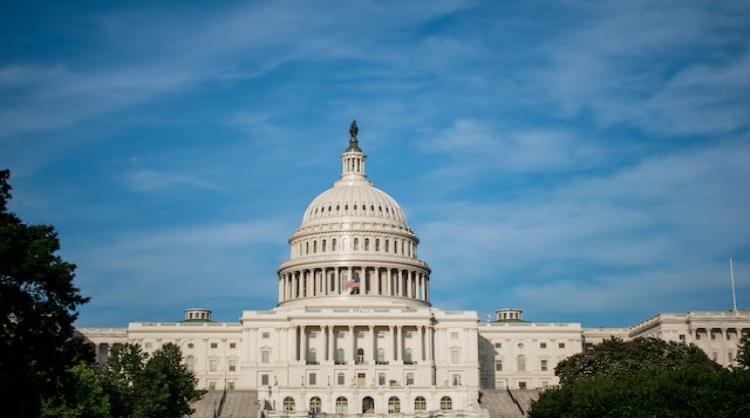FCC Tells Congress - Help Us Save the Universal Service Fund!
August 26, 2022 | by Andrew Regitsky

On August 15, 2022, the FCC Released its Report on the Future of Universal Service (Report) as part of Docket 21-476. The Report is a requirement of the 2021 Infrastructure, Investment and Jobs Act (Act).
The Infrastructure Act includes the largest ever federal investment in broadband, totaling approximately $65 billion. This Report provides recommendations for further actions by the Commission and Congress to build upon that investment and improve the ability of the Commission to achieve its goals of universal deployment, affordability, adoption, availability, and equitable access to broadband through the Universal Service Fund (USF or Fund) and other Commission programs, to ensure that all of us have the broadband needed to succeed and thrive today. (Report, at para. 1).
The initial sections of the Report provide specific recommendations the Commission plans on undertaking to improve specific aspects of the Universal Service Fund. They include:
Initiating a proceeding to consider the future support needs of networks serving high-cost and other hard to serve areas.Once it has better broadband maps, developing a competitive process to provide additional support for mobile broadband.
Initiating a rulemaking to evaluate how the Lifeline program can best operate with the Affordable Connectivity Program.
Determine if Lifeline support should continue for voice-only service.
Working with Congress to expand the list of entities eligible for Rural Health Care Program funding.
The most important section of the Report covers contributions to the Universal Service Fund. Providing background on how the Fund operates, the Commission notes that Section 254(d) of the Telecommunications Act, requires every telecommunications carrier that provides interstate telecommunications services to contribute, “on an equitable and nondiscriminatory basis, to the specific, predictable, and sufficient mechanisms established by the Commission to preserve and advance universal service.”
Contributions from telecommunications service providers are determined using a quarterly contribution factor that is calculated based on the ratio of total projected quarterly costs of the universal service support mechanisms to contributors’ projected end-user interstate and international telecommunications revenue. Providers may pass through the contribution cost to end-users in the form of a line item that is calculated by applying the contribution factor to the portion of the consumer’s bill attributable to interstate telecommunications services.
Unfortunately, the contribution factor keeps increasing.
The contribution factor, however, has increased in recent years, from 16.7% in the first quarter of 2017, to 25.2% in the first quarter of 2022, 23.8% in the second quarter of 2022, and 33.0% in the third quarter of 2022. These increases are due in large part to a decline in the contributions revenue base, i.e., reported revenues from interstate telecommunications services, which decreased from $65.9 billion in 2011 to $41.4 billion in 2020. The decline does not generally appear to be a result of service providers reclassifying telecommunications revenues from interstate to intrastate; rather, providers are reporting a declining share of telecommunications revenues and an increasing share of non-telecommunications revenues... Much of the decline was driven by decreasing revenues in subscriber line charges, mobile telecommunications, and non-operator switched toll services. (Id., at para. 91).
Conversely, demand for universal service support has remained at about $8 billion a year, meaning the current contribution methodology is unsustainable. One potential solution would require broadband providers to contribute to the Fund. This would reduce the contribution factor by about 4 percent annually, and many parties believe the FCC has legal authority to implement this now. Some consumer groups oppose this, however, arguing that the new costs would be passed through to consumers, reducing broadband affordability.
The idea that seems to be gaining traction through the industry is to require non-telecommunications carriers to contribute to the Fund.
A diverse and wide-ranging group of commenters supported a second idea related to USF contributions: further broadening the USF contribution base to include entities including “edge providers” such as streaming video providers, digital advertising firms, and cloud services companies rather than relying solely on the end-users—or consumers and enterprises—that have historically paid the line-item fees passed through by providers. Commenters offer a wide range of proposals centered on the notion that online companies that are profiting from the ubiquitous broadband services provided through the USF program should start contributing towards universal service. Many focused on edge provider digital advertising revenues. (Id., at para. 98).
The agency concludes, however, that it may need specific Congressional authority before it can the “fix” Fund contributions problem.
On review, there is significant ambiguity in the record regarding the scope of the Commission’s existing authority to broaden the base of contributors. As such, we recommend Congress provide the Commission with the legislative tools needed to make changes to the contributions methodology and base in order to reduce the financial burden on consumers, to provide additional certainty for entities that will be required to make contributions, and to sustain the Fund and its programs over the long term. (Id., at para. 111).
In other words, there will be no additional Commission action without Congress acting first. As a result, don’t hold your breath. It will probably be years before we get meaningful Congressional action to fix the Fund.

